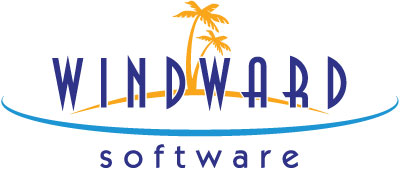
 |
|
The Invoice Details window - Invoice tab, shown in Figure 1, displays information that applies to the entire invoice. Although some of this information can be modified , usually this information was previously selected in the New Invoice dialog box.
Some tab functions work in relation to the window's Toolbar. Click Toolbar to view detailed information about the Toolbar button options.

Figure 1: The Invoice tab
The controls on the Invoice tab are detailed in Table 1.
|
Control |
Details |
|
Type |
This drop down list displays the current invoice type. Depending on the status of the invoice, you may be able to change the invoice type. See: invoice type descriptions for more information on invoice types. |
|
Invoice sub-types provide the ability to further categorize your invoices for reporting purposes and options for the invoice form that can be printed with a specific sub-type. |
|
|
Clerk |
This drop down list displays the clerk or salesperson that created the invoice. You can change select a different clerk from the drop-down list and the clerk name appears in the title bar of the invoice (along with the invoice number and customer name if assigned) |
|
This text box displays the customer attached to the invoice, if one has been attached. To change or associate a customer to the invoice, click the ellipse button to open the Find Customer window. Once a new customer has been selected, a confirmation window display, as shown in Figure 2.
If the previous customer or new customer has either tax exemptions or contract pricing, then a re-price/Re-Tax confirmation window will appear, as shown in Figure 3.
|
|
|
Ship To |
This text box contains the 'ship to' customer attached to the invoice, if one has been attached. |
|
This text box displays the tax area for this specific invoice. This value is populated from the customer's tax area when a customer is associated with the invoice. The tax area can be changed on each specific invoice without affecting the customer's default tax area. In some jurisdictions, the tax area is based on where the goods change hands, in other word, if the customer picks up the goods, then the tax area is based on the stores location. If the goods are shipped to the customer's location, then the tax area for the customer's location must be used. See setting the Invoice tax area priority for more information. |
|
|
Number |
This text box contains the invoice number, if one has been assigned. |
|
Ref # |
This box can be used for entering any type of reference information. This information can be printed on your invoices.
|
|
Date 1 |
This text box is blank unless the invoice is or was an estimate. This box displays the date on which an estimate is created. If an invoice was originally created as an estimate, then this box displays the date on which the estimate type invoice was created and the caption changes to Date of E. |
|
Date 2 |
This text box is blank unless the invoice is or was a work order or Layaway. This box is used to display the date on which a work order or Layaway is created. If an invoice was originally created as a work order or Layaway, then this box displays the date on which the work order or Layaway type invoice was created and the caption changes to Date of W or Date of Y respectively. |
|
Date 3 |
This text box is blank until an invoice is converted to a final invoice type. Final invoice types include the following: |
|
Ordered |
This text box contains the date on which the invoice was created regardless of the invoice type. |
|
Book Month |
By default, System Five populates the book month based on the ordered date. To support legacy versions, it is possible to configure System Five to allow manual setting of the book month value. |
|
PO Number |
The customer's purchase order number can be entered here and you can search for the invoice based on this PO number. |
|
Terms |
This text box displays the payment terms from the associated customer's record. |
|
Unique |
This box displays the unique ID for the invoice record in the database. This value cannot be modified. |
|
[Generate Invoice Number] |
Click the button to force the automatic generation of an invoice number. |
|
Void Invoice |
Click the button to remove all line items and void the invoice.
|
Table 1: The Invoice tab details
See also: Invoice Details window for access information or information about other window parts